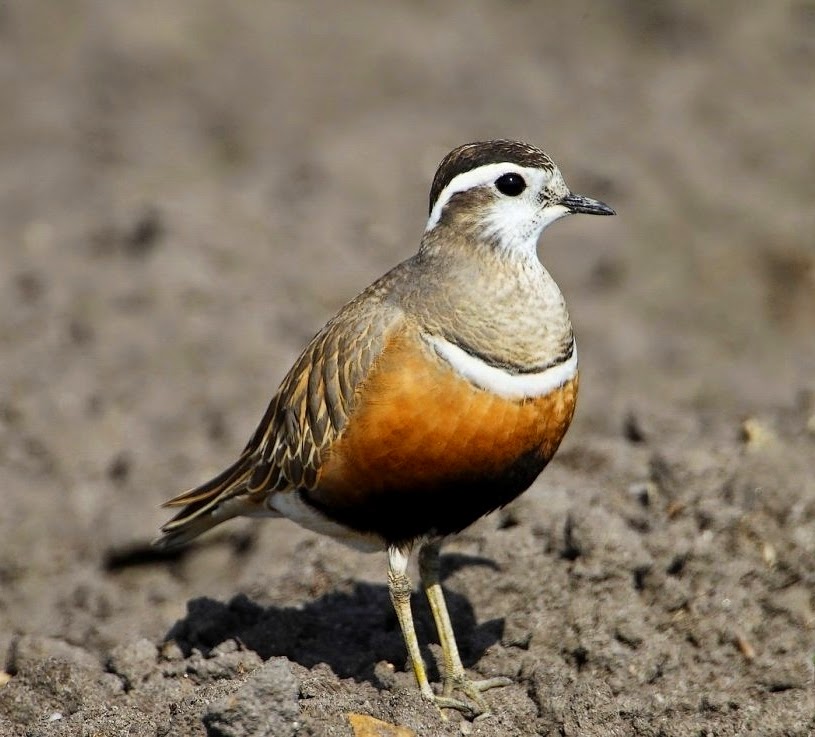 |
| Photo by Peter Nielsen (Danmarks Fugle og Natur) |
Common name:
Eurasian dotterel (en); borrelho-ruivo (pt); pluvier guignard (fr); chorlito carambolo (es); mornellregenpfeifer (de)
Taxonomy:
Order Charadriiformes
Family Charadriidae
Range:
This species breeds patchily in the northernmost parts of Eurasia, from the northern British Isles, and through northern Scandinavia and northern Russia and as far east as western Alaska. They also breed in central Asia, in northern Mongolia and Kazakhstan and adjacent southern Russia. They migrate south or south-west to winter around the Mediterranean, especially in northern Africa but also in the eastern Iberian Peninsula and in the Middle East from Egypt and Syria east to Iraq and extreme south-western Iran.
Size:
These birds are 20-24 cm long and have a wingspan of 57-64 cm. Females tend to be larger than males, weighing 100-140 g while males weigh 85-115 g.
Habitat:
The Eurasian dotterel breeds on flat, open uplands, on mountain ridges and plateaus with sparse vegetation, and on coastal and inland tundra of moss, short grass or lichen and bare patches of rock. Outside the breeding season they use open grasslands and dry scrublands, stony and scrubby steppes and semi-deserts, and arable land.
Diet:
They feed mainly on adult and larval insects, including beetles, flies, butterflies and moth, grasshoppers, crickets, earwigs and ants, as well as spiders, snails and earthworms, and plant matter such as leaves, seeds, berries and flowers.
Breeding:
Eurasian dotterels breed in May-August, either in solitary pairs or in loose groups of 2-5 pairs. They are polyandrous, with females most often leaving after laying the eggs to find another mate. The nest is a shallow scrape on bare ground or short vegetation, where the female lays 3-4 eggs. In most cases the eggs are incubated by the male, but sometimes by both parents, for 18-27 days. The chicks leave the nest soon after hatching and are immediately able to feed themselves, but rely on the father for protection until they fledge, about 30 days after hatching.
Conservation:
IUCN status – LC (Least Concern)
This species has a large breeding range, but the global population is estimated at just 50.000-220.000 individuals. The overall population trend is decreasing, although some populations have unknown trends, and the species may suffer in the future from the predicted dramatic climate change effects in high-Arctic habitats.







